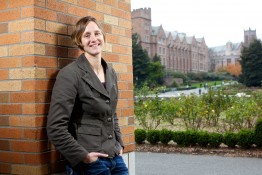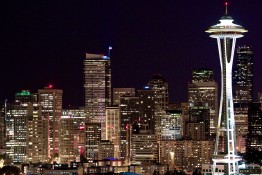On Tuesday, October 20, Pulitzer Prize-winning journalist and author Jed Horne took the stage to discuss lessons learned and unlearned ten years after Hurricane Katrina made landfall in Louisiana. Part of the Surviving Disasters: Natural Hazards & Resilient Communities series from UW College of the Environment, UW Alumni Association, and UW Graduate School, Horne focused on life in a post-apocalyptic environment.
Read more »Oceanography consortium donates XPrize winnings to UW sensor lab
A team of industrial, academic, and nonprofit institutions that was among the top finishers of the recent ocean acidification XPrize is donating its winnings to a University of Washington lab that helps track ocean conditions worldwide. The donation, made Oct. 13 during an event at the UW College of the Environment and announced by Honeywell, will allow the UW and the international Argo program to begin broadening observations to include ocean acidification.
Read more at UW Today »Natural Hazards and Resilient Communities: Q&A with UW’s Kate Starbird
From city to city and across continents, barriers to communication are fewer than ever before. In an increasingly connected world, where the 24-hour news cycle reigns and a billion people are on Facebook, people have grown accustomed to instant, accessible information that spans the globe. Kate Starbird, assistant professor at the UW’s College of Engineering, is exploring a new type of “digital volunteerism” that leverages social media as an online meeting place during crises.
Read more »UW study: Will Puget Sound’s population spike under climate change?
What began as mere speculation has started to take a more serious turn. Climate change is now implicated in flooding, droughts, heat waves and other catastrophes that computer models predict will become more common. Suddenly, a region long mocked for its gloomy weather seems like it could be a welcome refuge from a hot, dry future. A UW graduate student recently took an in-depth look at the issue, which would have implications for the region’s long-term water supplies, transportation and other infrastructure.
Read more at UW Today »Bubble plumes off Washington, Oregon suggest warmer ocean releases frozen methane
Warming ocean temperatures a third of a mile below the surface, in a dark ocean in areas with little marine life, might attract scant attention. But this is precisely the depth where frozen pockets of methane ‘ice’ transition from a dormant solid to a powerful greenhouse gas. New University of Washington research, whose lead author is UW professor of oceanography H.
Read more at UW Today »





